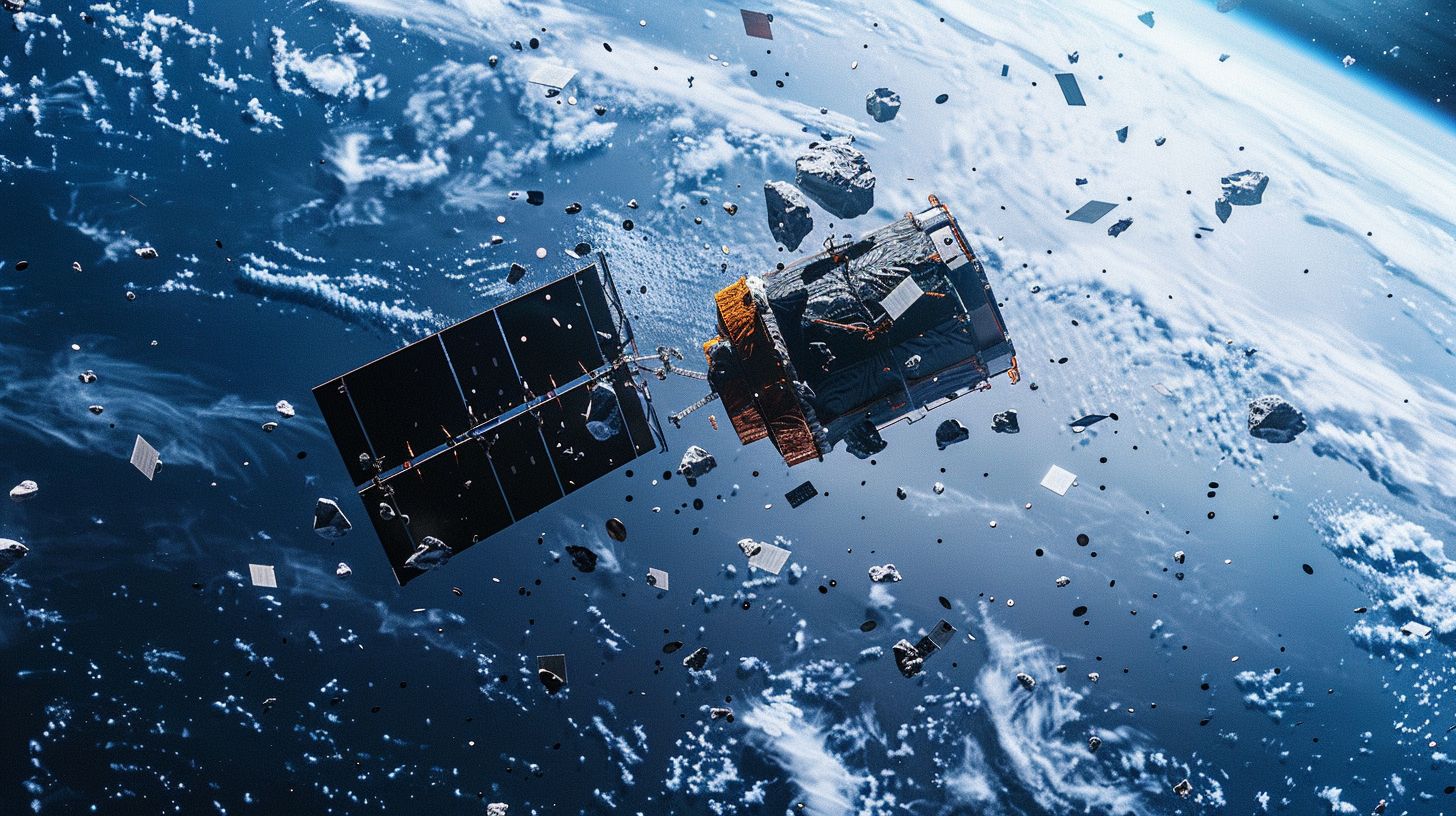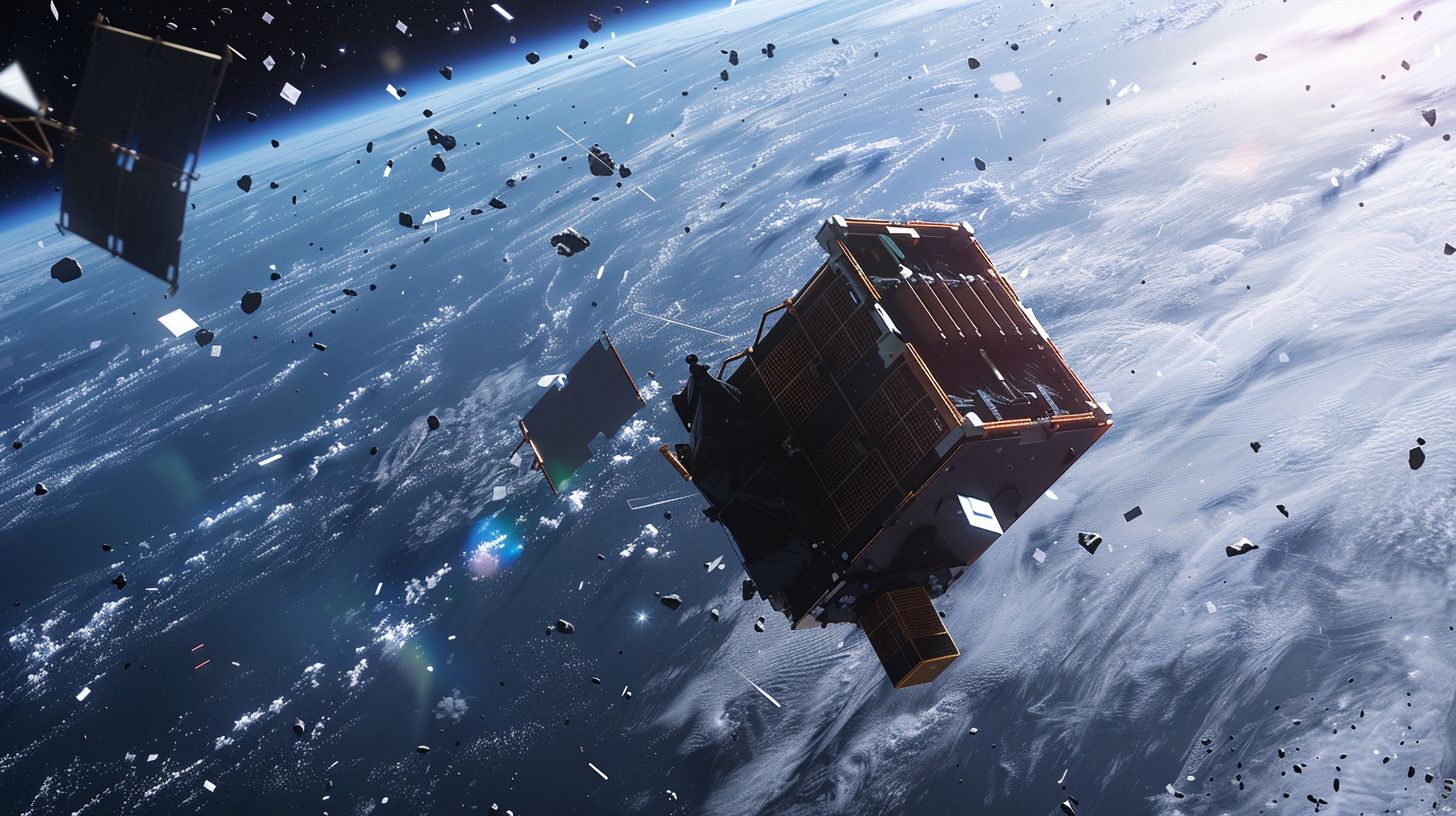Have you ever wondered what happens to old satellites and rocket parts after they finish their space missions? Space is full of these leftovers, called space debris or space junk, and it’s becoming a big problem.
Pieces of broken satellites or spent rockets zoom around Earth at super-fast speeds. They can crash into a working spacecraft or even the International Space Station! It’s like a game of dodgeball up there, but with metal pieces instead of rubber balls.
Good news just flew in from orbit: A new satellite designed to check out all this floating clutter has made its way above our heads. The ADRAS-J satellite was launched by Astroscale with one goal – to take a close look at some space junk and figure out how we might clean it up.
Rocket Lab launched the Astroscale Adras-J satellite, specifically designed to inspect and contribute to the removal of space debris in space orbit, addressing the critical issue of space junk accumulati.
Imagine having a flying trash inspector that could help us tidy up outer space! In this article, we’ll explore how this cool satellite works and why its mission could make a huge difference for keeping our skies safe.
Ready to blast off into learning about cleaning up the cosmos? Let’s dive in!
Key Takeaways
- Astroscale launched the ADRAS – J satellite to inspect and learn about space junk in orbit.
- The mission is to keep space safe for new missions by planning future debris removal.
- Rocket Lab’s Electron rocket carried ADRAS-J into a stable low-Earth orbit from New Zealand.
- The technology used in satellites like ADRAS – J could lead to repairing or moving satellites in space.
- This mission helps make sure that outer space activities are sustainable for years to come.
Overview of the Satellite and Its Mission
The satellite is equipped with advanced technology and thrusters that enable it to inspect space junk in low earth orbit. Its mission is to help mitigate the growing problem of orbital debris and ensure the sustainability of outer space.
After a successful first attempt to safely approach, we made contact and are now excited to survey and characterize a real, innovative rendezvous and proximity operations. We are ready to start operations and thoroughly characterize a tangible piece, creating a solid line for our mission progress.
Design and capabilities of the satellite
ADRAS-J is a high-tech satellite built for a big job: tracking and inspecting space junk. It has special tools to get up close to old, unused rocket parts floating in orbit. The spacecraft can do Rendezvous and Proximity Operations (RPO), which means it can move near space debris safely.
This satellite carries cameras and sensors that help it see and understand the movement of space trash like dead rocket stages. ADRAS-J’s thrusters are powerful yet precise, allowing for careful movements in space.
This makes sure it doesn’t crash into the objects it’s studying.
Engineers designed ADRAS-J to tackle the tough task of orbital debris removal. It will approach and keep an eye on space waste as part of JAXA’s program to clean up our skies. Its mission is key for learning how to deal with the mess we’ve made above Earth.
The role of the satellite in space junk inspection
The ADRAS-J satellite has a special job. It flies close to space junk to see how it moves and what condition it’s in. This job is part of the Commercial Removal of Debris Demonstration program.
The satellite looks at an old Japanese rocket body that’s floating in space.
Seeing how this rocket piece moves helps people plan how to take away junk like this in the future. With good information, they can keep space safe for new satellites and missions.
This work supports keeping outer space activities sustainable for a long time. It’s all about being responsible and making sure we use space safely without leaving too much trash behind.
The ADRAS-J mission shows us how satellites can come up close to other objects in space safely. These skills are important for fixing things while they’re still in orbit or bringing them back down if needed.
The Launch Details and the Satellite’s Orbit Journey
An orbital debris inspection demonstration mission aims to assess a piece of space debris in the crucial phase of orbital debris. This initiative aligns with discussions at the space debris conference, emphasizing satellite servicing and long-term orbital sustainability. Addressing space situational awareness, launch services, and space systems, it underscores the importance of space sustainability for future generations. Once successfully launched, the 150-kilogram ADRAS-J satellite is designed to rendezvous in Earth orbit, contributing to the cleanup of large pieces of debris and space junk. This satellite technology represents a pivotal step towards a cleaner future in space, as we strive to manage and mitigate pieces of debris for a safer and more sustainable space environment.
Rocket Lab’s Electron Rocket took off with ADRAS-J from Mahia, New Zealand. The launch occurred at Launch Complex 1, hitting the launch window precisely.
- Electron rocket soared into the sky, carrying ADRAS – J to its destination in space.
- After lift-off, the rocket reached low-earth orbit where it deployed the satellite.
- ADRAS – J then separated from the rocket’s kick stage, starting its solo journey.
- It entered a stable orbit around Earth, set for the mission ahead.
- Ground control established communication with ADRAS – J to command its functions.
- Engineers checked all systems on board to make sure everything worked right.
- They planned a series of maneuvers for ADRAS – J to meet up with the H2A upper stage.
- Over the next few months, rendezvous tests will prepare ADRAS – J for inspection tasks.
- Its cameras and sensors are ready to capture images and data of space debris.
The Future Implications of This Technology
This new satellite technology could change how we handle space junk. It shows us ways to watch and grab debris that’s been left in orbit. Soon, we might see these satellites fixing or moving other satellites without having to bring them back down to Earth.
Space companies are starting to make machines that can reach out and fix broken satellites. This could save money by making those satellites last longer. Also, such tech may lead people to think more about keeping space clean when they design new satellites.
Astroscale, a key player in space cleanup, emphasizes the importance of achieving a sustainable space environment by better understanding debris risks. The space mission, set to take place at Rocket Lab’s Launch Complex 1, marks the world’s first attempt to safely approach and analyze a space object. Astroscale states that this mission is pivotal for advancing our understanding of the space environment and mitigating risks associated with debris, contributing to the overall goal of fostering a cleaner and more sustainable orbital landscape.
As this technology gets better, we’ll be able to keep an eye on our space backyard much easier. Satellites like the ADRAS-J will set the stage for cleaner orbits around our planet.
More countries and businesses will have tools for taking care of their own space trash safely.
Conclusion
In conclusion, Astroscale’s ADRAS-J satellite has successfully reached orbit after a launch from Rocket Lab’s Launch Complex 1 in New Zealand. The satellite, designed for space junk inspection, is part of an orbital debris removal program vital for securing a sustainable future in space.
Its mission, selected by the Japan Aerospace Exploration Agency (JAXA), will demonstrate crucial rendezvous and proximity operations necessary for on-orbit services. By observing and understanding derelict rocket stages in orbit, this technology aims to pave the way for assisted deorbiting methods in the future.
With its practical implications and potential impact on space sustainability, ADRAS-J marks a significant step towards effective space debris mitigation practices.







